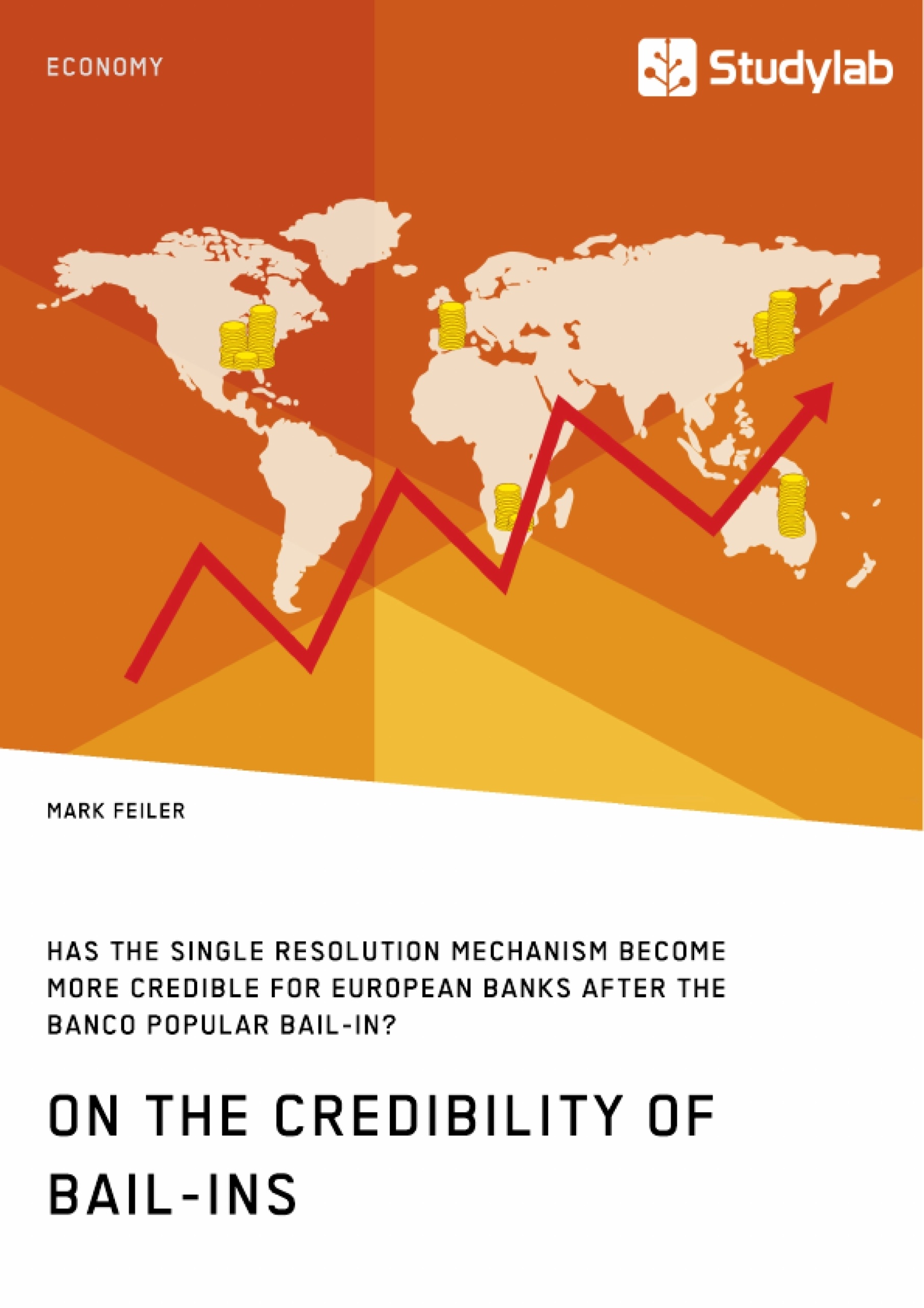During the recent financial crisis, resolution mechanisms proved to be insufficient to wind down systemically important financial institutions. Especially the bankruptcy of Lehman Brothers led to severe macroeconomic instability. Afterwards, national and supranational authorities implemented new regulations for preventing and managing bank failures, among them the Single Resolution Mechanism (SRM) in the European Banking Union.
The failure of Banco Popular in June 2017 put the SRM to the first test. As the resolution mechanism apparently worked smoothly, and did not contaminate other banks or even the non-banking industry, the question arises whether the resolution mechanism has consequently become more credible for bank investors. By analyzing market reactions to the Banco Popular bail-in, the author primarily aims to answer this question. Hypothetically, if investors perceive the bail-in as a credible commitment by the Single Resolution Board, the implicit insurance should cease. For this reason, investors would demand higher, risk-reflecting interest rates, impairing the bank’s profitability. Therefore, in the case that this is the dominant effect, a bank’s share price should fall.
In this book:
- Single Resolution Mechanism;
- European Banking Union;
- financial industry regulations;
- bail-in and bail-out;
- too big to fail banks;
- Banco Popular
Inhaltsverzeichnis (Table of Contents)
- Introduction
- To Bail-in or Not to Bail-in
- The General Approach
- The Regulator's Decision Process
- Effect of too-big-to-fail
- Addressing the Problem
- Event Study
- Previous Studies
- Context
- Hypotheses
- Methodology
- Robustness Testing
- Interpretation of Results
- Shortcomings and Further Research
- Conclusion
Zielsetzung und Themenschwerpunkte (Objectives and Key Themes)
This work examines the impact of the Banco Popular bail-in on the credibility of the Single Resolution Mechanism (SRM) for European banks. It analyzes the effectiveness of the SRM in mitigating the risk of too-big-to-fail and assesses the influence of the bail-in on market perception and confidence in European banking.
- The effectiveness of the Single Resolution Mechanism (SRM)
- The impact of bail-ins on market confidence and investor perception
- The role of too-big-to-fail in shaping regulatory responses
- The impact of the Banco Popular bail-in on the credibility of the SRM
- The potential for future bail-ins and their implications for the European banking system
Zusammenfassung der Kapitel (Chapter Summaries)
- Introduction: Introduces the topic of bank bail-ins and the Single Resolution Mechanism (SRM), highlighting the significance of the Banco Popular case study.
- To Bail-in or Not to Bail-in: Discusses the general approach to bail-ins, the decision process of regulators, the impact of too-big-to-fail, and proposed solutions to address the problem.
- Event Study: Examines previous studies on the subject, sets the context for the research, outlines hypotheses, details the methodology employed, presents robustness testing, analyzes the interpretation of results, and discusses shortcomings and future research directions.
Schlüsselwörter (Keywords)
This paper focuses on the credibility of bail-ins in the context of the Single Resolution Mechanism (SRM), the impact of the Banco Popular bail-in, too-big-to-fail, event study methodology, and market perception of European banking.
- Quote paper
- Mark Feiler (Author), 2017, On the Credibility of Bail-ins. Has the Single Resolution Mechanism become more credible for European Banks after the Banco Popular Bail-in?, Munich, GRIN Verlag, https://www.grin.com/document/379530



